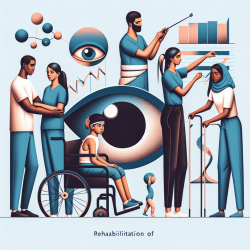The journey to understanding autism spectrum disorder (ASD) is a complex one, with many paths leading to the same destination: improved outcomes for individuals with ASD. Recent research has shed light on the role of infant cerebellar-cerebral functional connectivity in relation to behavioral development in ASD. This groundbreaking study offers valuable insights that practitioners can use to enhance their skills and potentially contribute to earlier detection and intervention strategies.
The Importance of Cerebellar Connectivity
The cerebellum has long been recognized for its role in motor control, but recent data suggest it also plays a crucial role in error-based learning (EBL), which is essential for adaptive movement, cognition, and social prediction. This capability is instantiated in polysynaptic, cerebellar-cerebral circuits. Understanding these connections can help practitioners identify early indicators of ASD.
Key Findings from the Study
- The study used data from the Infant Brain Imaging Study to examine 6-month-old infants' cerebellar functional connectivity in relation to later ASD-associated behaviors.
- Cerebellar-FPN (frontoparietal network) and cerebellar-DMN (default mode network) connections were analyzed as proxies for EBL.
- The study found no direct associations between these cerebellar connections and ASD. However, it identified prospective correlates of ASD-associated behaviors in networks that support EBL.
- This suggests that while cerebellar contributions may not be directly observable at 6 months, they could play a role at different developmental stages or through other neuroimaging modalities.
Implications for Practitioners
This research highlights the importance of considering the broader network-level contributions when assessing risk factors for ASD. Practitioners should be aware that while cerebellar connectivity may not provide immediate diagnostic insights at 6 months, it could inform future interventions and understanding of ASD pathogenesis.
The study encourages practitioners to consider the potential of using different neuroimaging modalities or developmental stages to better understand cerebellar contributions to ASD. This approach could lead to the identification of modifiable pathways amenable to intervention.
Encouraging Further Research
The findings underscore the need for further studies to replicate and extend network-level results. Future research should focus on investigating brain-behavior associations at different developmental stages and using various neuroimaging techniques. Such efforts hold promise for identifying mechanistically informed risk biomarkers for ASD, bridging scientific theory and clinical translation.
This research opens new avenues for understanding ASD and improving early detection methods. By staying informed and engaged with ongoing research, practitioners can play a pivotal role in advancing the field and enhancing outcomes for individuals with autism spectrum disorder.










